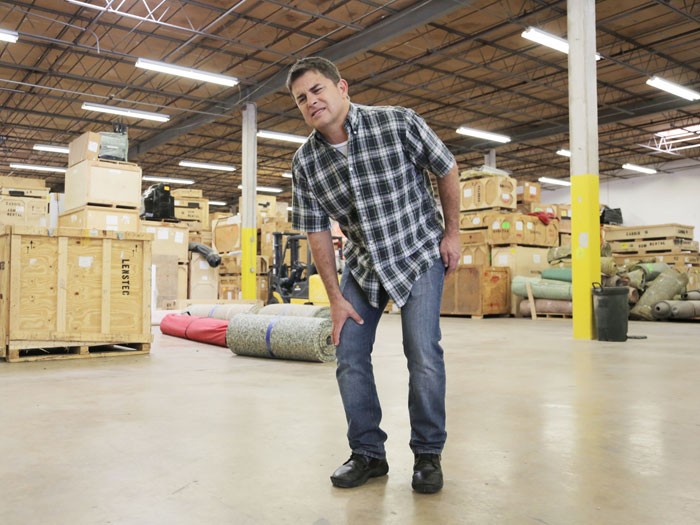The Secret Success of Early Intervention Programs in Workers’ Comp

Musculoskeletal disorders, or MSDs, are a pain point in workers’ compensation. According to OSHA, MSDs are “among the most frequently reported causes of lost or restricted work time.” Injured employees with MSD cases are said to account for 33 percent of all worker injury and illness cases, says one Bureau of Labor Statistics report.
These injuries — like carpal tunnel, tendinitis, muscle strain and lower back injuries — stem from lifting heavy items, bending or reaching overhead, pushing and pulling heavy loads and repetitive motion.
But these risk factors can be prevented through ergonomics. They can also be prevented through early intervention programs, which act as on-site, immediate assessments for workers the same day an injury or discomfort occurs. And these types of interventions are proving success.
Implementing An Early Intervention Program
Schenker Logistics, a global logistics company headquartered in Essen, Germany that manages large warehouses for Fortune 500 companies — some of these facilities as big as 4 million square feet — knew exactly how burdensome MSDs could be for a workers’ comp program.
“There’s a lot of activities and exposures every day,” said Kevin Hollingshead, the health, safety and environmental director for Schenker in the U.S. He said with close to 100 distribution centers and freight-forwarding operations, “the company has over 14 million exposure hours each year.”
It’s no wonder, then, that there are this many MSD-related injuries and illnesses every year: “If you think about the landscape of the U.S., 20 years ago, it was a nation built on manufacturing and industry. Today, instead of making things, we move things around,” said Hollingshead. He added Schenker’s top injuries-turned-claims are MSDs and similar soft tissue injuries; followed by the misuse or mishandling of equipment; and then slips, trips and falls.
In 2007, Schenker saw nearly $2 million worth of strain and other muscle events reported in its workers’ compensation claims. The team knew there had to be a better way. So Schenker partnered with Atlas Injury Prevention Solutions.
“We work toward preventing injuries instead of waiting for them to happen,” said Curt DeWeese, director, Atlas. Together, the two companies established an early intervention program in which Atlas is able to assess injured workers on the spot, allowing these workers to learn and understand what is going on immediately with any strain they may feel. Atlas also works with employees to educate them on how to perform tasks in safer ways.
“We can go on site and watch workers do their job. Then we educate on how to do it safer,” DeWeese said.
“The early intervention gets injured workers the right care to the injury or discomfort as quick as possible,” he added. “Traditional medicine for work comp included medical management, time away from work and high costs. Someone in pain can [now] talk to someone the day injury occurs and get the reassurance something sinister isn’t going on.”
These joint efforts have brought that staggering $2 million MSD bill down to under $500.
“We have on average a 92 to 95 percent resolution without referral out,” said DeWeese of the Schenker personnel who consult with the on-site care.
With these kind of results, it’s no wonder both Hollingshead and DeWeese are looking to share their insights during the 2018 National Workers’ Compensation and Disability Conference® and Expo this December 5 through 7 at the Mandalay Bay in Las Vegas.
They will highlight the benefits of having an early intervention program in place during their presentation, “Properly Designed Early Intervention: A Workers’ Compensation MSD Speed Bump,” with a specific focus on medical management and ergonomics. The goal is to help other companies learn how to prevent MSDs from progressing into OSHA recordable injuries, and because of this, they will also be reviewing OSHA-allowable first aid, work site evaluation, job coaching and correcting of ergonomic stressors as well.
Hollingshead and DeWeese will further share the data from Schenker’s successes, using it as a prime example that early intervention works.
“Companies need to figure out these losses and this is a simple way to do so,” added DeWeese.
They will be speaking on Dec. 6 at 3pm. The session is MM5. &










